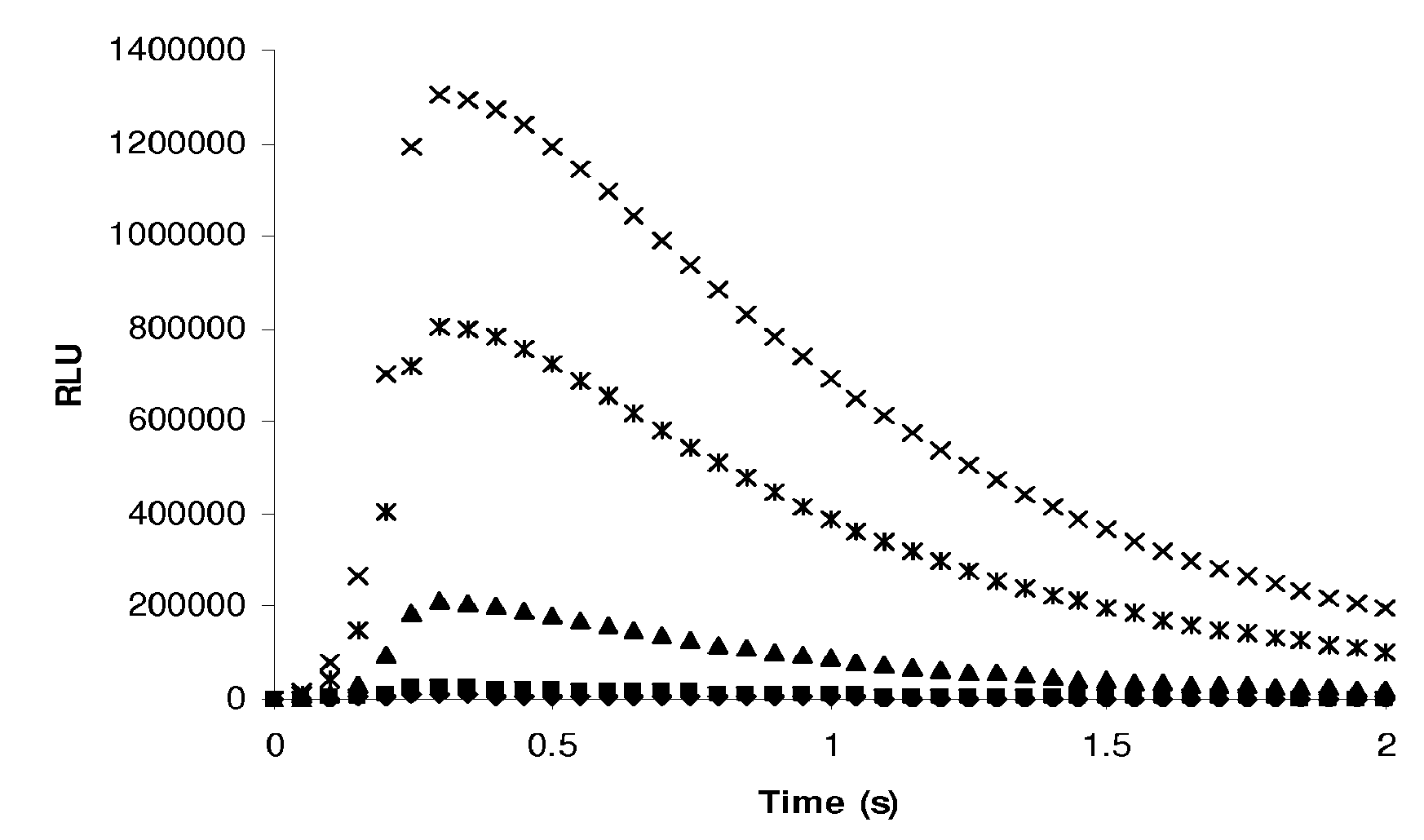Assay for cardiac troponin autoantibodies
a technology of autoantibodies and cardiac troponin, which is applied in the field of autoantibodies reactive with cardiac troponin, can solve the problem of inconvenient assay results of cardiac troponin
- Summary
- Abstract
- Description
- Claims
- Application Information
AI Technical Summary
Problems solved by technology
Method used
Image
Examples
example 1
Cardiac Troponin-1-C Complex Microplate Preparation and Testing
Microplate Coating Procedure
[0198]The microplate coating solution was prepared by dissolving human cardiac troponin-I-C complex (cTnIC, commercial vendor) in phosphate buffer (0.2 M, pH 8) to give solutions at the following concentrations: 80, 400, 2000, or 10000 ng / mL. The coating solution (100 μL) was added to the wells of a white high-binding flat-bottom 96-well polystyrene microplate. The microplate was then sealed, placed on an orbital shaker at 28 rpm and incubated at 38° C. for 1 hour (h). The coating solution was then replaced with a blocking solution (300 μL) consisting of 2% wt / v bovine serum albumin (BSA) in phosphate buffered saline (PBS, pH 7.2) which was replaced with fresh blocking solution before the plate was sealed, placed on an orbital shaker at 28 rpm and incubated at 38° C. for 1 h. The coating solution was then replaced with an overcoating solution (300 μL) consisting of 2% wt / v sucrose in phosphate...
example 2
Analysis of Normal Donor Human Plasma for CTnIc Reactive Autoantibodies
[0201]The test sample (10 μL) and the ARCHITECT® STAT-troponin I kit Preincubation Diluent (90 μL) were mixed and added to the well of a microplate coated with cTnIC at a concentration of 2000 ng / mL (Example 1.) After all test samples were dispensed, the microplate was then sealed, placed on an orbital shaker at 28 rpm and incubated at 37° C. for 2 h. The diluted test sample solutions were then removed and the wells of the microplate were washed with the ARCHITECT® Line Diluent (3×300 μL). A mouse anti-human IgG acridinium labeled conjugate solution (100 μL) was added to each test well. After the conjugate was added to all test samples, the microplate was then sealed, placed on an orbital shaker at 28 rpm and incubated at 37° C. for 1 h. The conjugate solution was then removed and the wells of the microplate were washed with the ARCHITECT® Line Diluent (3×300 μL). The microplate was loaded into the instrument and...
example 3
Analysis of cTnI Positive Human Plasma for CTnIc Reactive Autoantibodies
[0202]Following Example 2, human plasma samples that had tested positive for cTnI (0.2-7 ng / mL) were analyzed for cTnIC reactive autoantibodies. The distribution of autoantibody responses to cTnIC is shown in FIG. 4, and a summary of the statistics is listed in Table 3. Twelve of eighty samples (15%) gave a response greater than the 75th percentile response (95% confidence level), and 3 of eighty (4%) gave a response greater than the 90th percentile response (95% confidence level) of the total cTnI positive population.
TABLE 3Summary statistics for cTnIC autoantibody response in cTnIC positivesamplesVariableRLUmaxSample size80Lowest value24420Highest value970910Median3739095% Confidence33136 to 47912Interval for the medianPercentilesRLUmax95% Confidence Interval 2.525105253021529202 to 328657584935 49435 to 13293390180220105752 to 468303 97.5588320
PUM
| Property | Measurement | Unit |
|---|---|---|
| concentrations | aaaaa | aaaaa |
| concentrations | aaaaa | aaaaa |
| concentrations | aaaaa | aaaaa |
Abstract
Description
Claims
Application Information
 Login to View More
Login to View More - R&D
- Intellectual Property
- Life Sciences
- Materials
- Tech Scout
- Unparalleled Data Quality
- Higher Quality Content
- 60% Fewer Hallucinations
Browse by: Latest US Patents, China's latest patents, Technical Efficacy Thesaurus, Application Domain, Technology Topic, Popular Technical Reports.
© 2025 PatSnap. All rights reserved.Legal|Privacy policy|Modern Slavery Act Transparency Statement|Sitemap|About US| Contact US: help@patsnap.com



